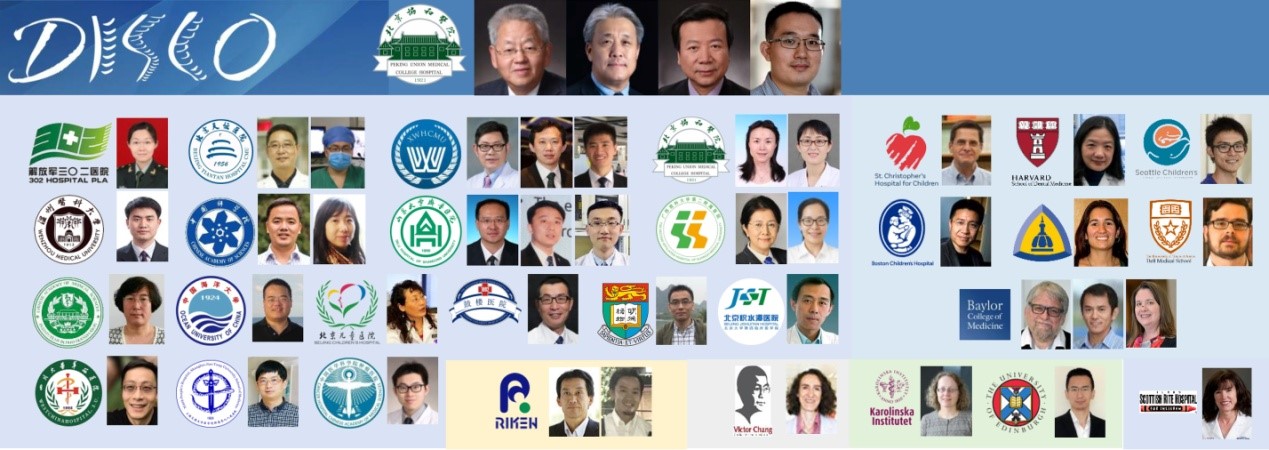On April 17, 2022, the Chinese Academy of Medical Sciences released “China’s Important Medical Achievements in the 21st Century” and “China’s Important Medical Progresses in 2021” at the China Medical Development Conference. The awards aimed to display China’s important medical science and technology achievements, promote the spirit of science, disseminate scientific knowledge and show the way forward for medical science and technology innovation in China. The project “Molecular Genetics Research of Spinal Deformity and Clinical Application” led by Academician Qiu Guixing of PUMCH was listed among “China’s Important Medical Achievements in the 21st Century”; the project “Cervical Cancer Screening Technology Suitable for Rural Areas in China and Its Demonstrative Research” led by Academician Lang Jinghe was listed among “China’s Important Medical Progresses in 2021”.
China’s Important Medical Achievements in the 21st Century: Molecular Genetics Research of Spinal Deformity and Clinical Application
The “pain” of spinal deformity patients is unimaginable to ordinary people. In the past, if patients were not treated in time, it would lead to serious deformity for most of them, causing heavy burden on their families and the society.
The team led by Academician Qiu Guixing from the Department of Orthopedic Surgery has long been committed to the research on the etiology and mechanism of spinal deformity, and has taken the lead in establishing the collaborative research team Deciphering Disorders Involving Scoliosis and COmorbidities (DISCO). At present, more than 30 research centers in China, the United States, Japan and Europe have participated in the multi-center research under the framework of DISCO. The collaborative research team set up a multi-dimensional polymorphic sample collection and management platform, which covers clinical case information, biological samples and genetic data, etc.
The team built China’s first globally leading genetic research system for skeletal deformities, and based on this, revealed that the TBX6 variant is the most important genetic cause of congenital scoliosis (CS); for the first time, it defined a brand-new CS subtype, TACS (TBX6-associated congenital scoliosis), which is widely recognized worldwide and called the “China Model”; subsequently, the team built a prediction system to evaluate the risk of clinical TACS, established a TACS gene dosage model, and put forward the concept of TACS II type, which shed light for the genetics community on the new genetic mechanism of common mutation combined with rare mutation in the same gene to cause a disease and provided an important basis for further understanding the molecular mechanism of congenital scoliosis.
The research outcomes of the team have been popularized and applied in more than 10 domestic tertiary Grade A hospitals, universities and research institutes in Beijing and Shanghai, and have been applied to accumulatively more than 2,000 patients with spinal deformity, contributing to the early screening and diagnosis of scoliosis in China.
With the successful opening of the first bone deformity genetic consultation clinic in China, the molecular genetics research of spinal deformity has entered the clinical application phase. On the basis of this clinical practice model, the team has worked out several guidelines and standards for the screening, early diagnosis and early treatment of spinal deformity, which has significantly promoted the standardization and homogenization of spinal deformity screening, prevention, diagnosis and treatment in China.

The international collaborative research team Deciphering Disorders Involving Scoliosis and COmorbidities (DISCO)
China’s Important Medical Progresses in 2021: High-risk HPV Testing Found to Be More Suitable for the Primary Screening of Cervical Cancer in China
Cervical cancer is the only malignant tumor with the hope of being fully prevented, controlled and even eliminated through vaccination, screening and early diagnosis and treatment.
From 2015 to 2018, the first chinese multi-center randomized controlled clinical trial of cervical cancer screening in large population was jointly carried out and completed by 41 tertiary Grade A hospitals and primary maternal and child healthcare institutions at district and county level in seven regions of China. The project was under the leadership of Academician Lang Jinghe and Professor Qiao Youlin from National Cancer Center and Cancer Hospital affiliated to Chinese Academy of Medical Sciences. The trial was based on 11 rural areas and 9 cities selected for the national cervical cancer and breast cancer screening program, and it admitted more than 60,000 women of appropriate age.
The three-year prospective study confirms that, under the existing service capacity of urban and rural primary healthcare institutions in China, HPV testing, as the primary screening technology for cervical cancer, is superior to traditional cervical cytology and VIA/VILI screening technology, and that it is the best choice to meet the huge demand of Chinese women for cervical cancer screening. The main research results were published in “JAMA Oncology” in 2021, with Professor Qiao Youlin and Academician Lang Jinghe as corresponding authors, and Professor Zhang Junji, Professor Dai Yi and Dang Le from the Department of Obstetrics and Gynecology as co-first authors. This study represents a key step forward towards correctly choosing objective, simple and efficient new technologies to solve the cervical cancer screening challenge facing hundreds of millions of Chinese women of appropriate age.
At present, Professor Zhu Lan, the Director of the Department of Obstetrics and Gynecology, has taken the lead in launching follow-up of the nationwide multi-center large-scale cervical cancer screening cohort. Personnel in the project “Research on Comprehensive Prevention and Control Technology and Strategy of Cervical Cancer Elimination Suitable for China (2021-2025)” worked with colleagues nationwide to address bottlenecks hindering the core technologies. Their efforts provide more sufficient evidence-based medical basis for establishing and implementing best practices for cervical cancer prevention and control suitable for China, further advancing the overall process of cervical cancer elimination in China.

Group photo of the team of “Cervical Cancer Screening Technology Suitable for Rural Areas in China and Demonstrative Research”
Correspondent: Wu Nan and Dang Le
Reporter: Fu Tanping
Picture courtesy: Fu Tanping and the Department of Obstetrics and Gynecology
Translator: Liu Haiyan
Editor: Wang Wei, Zhang Zhibo and Wang Yao
